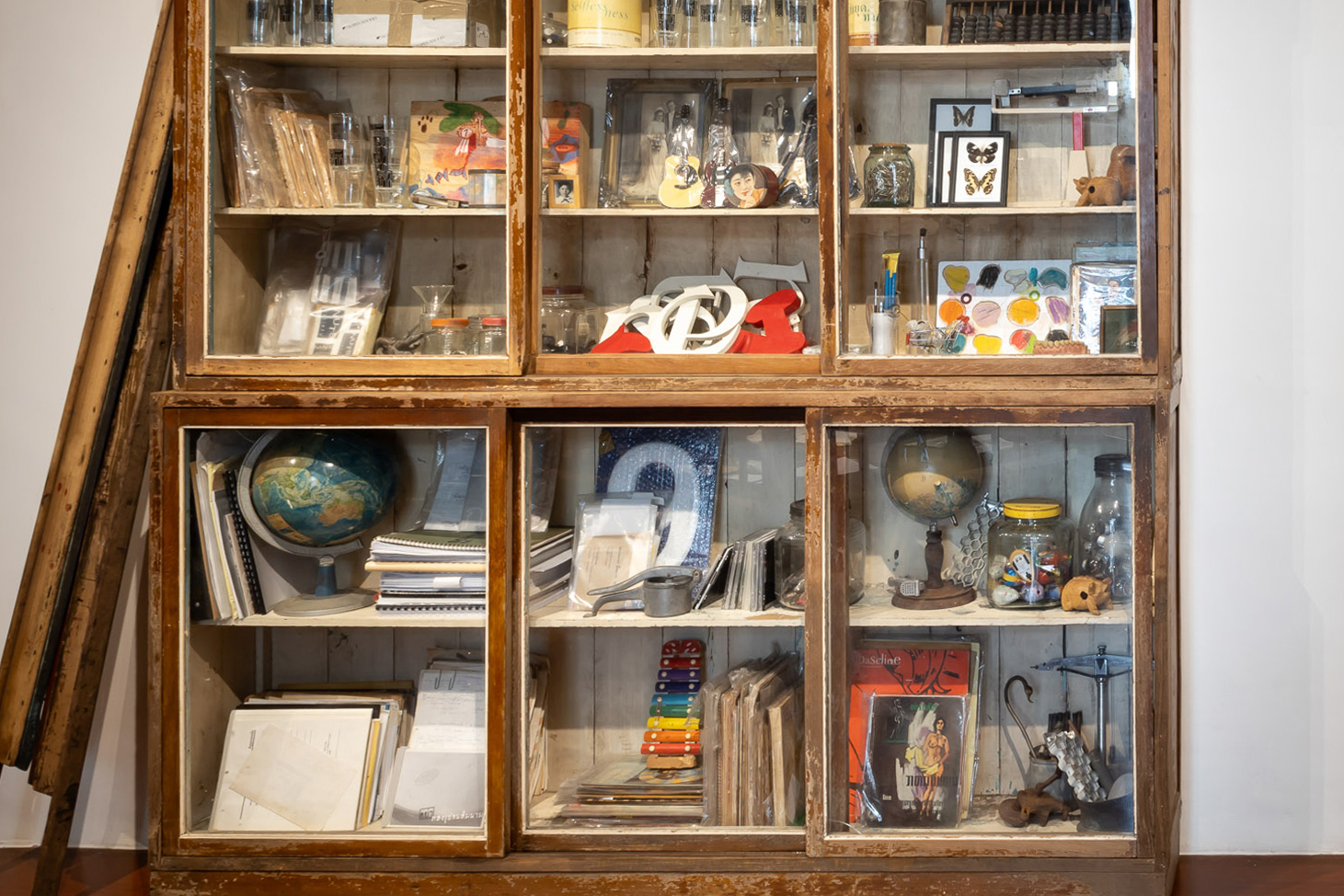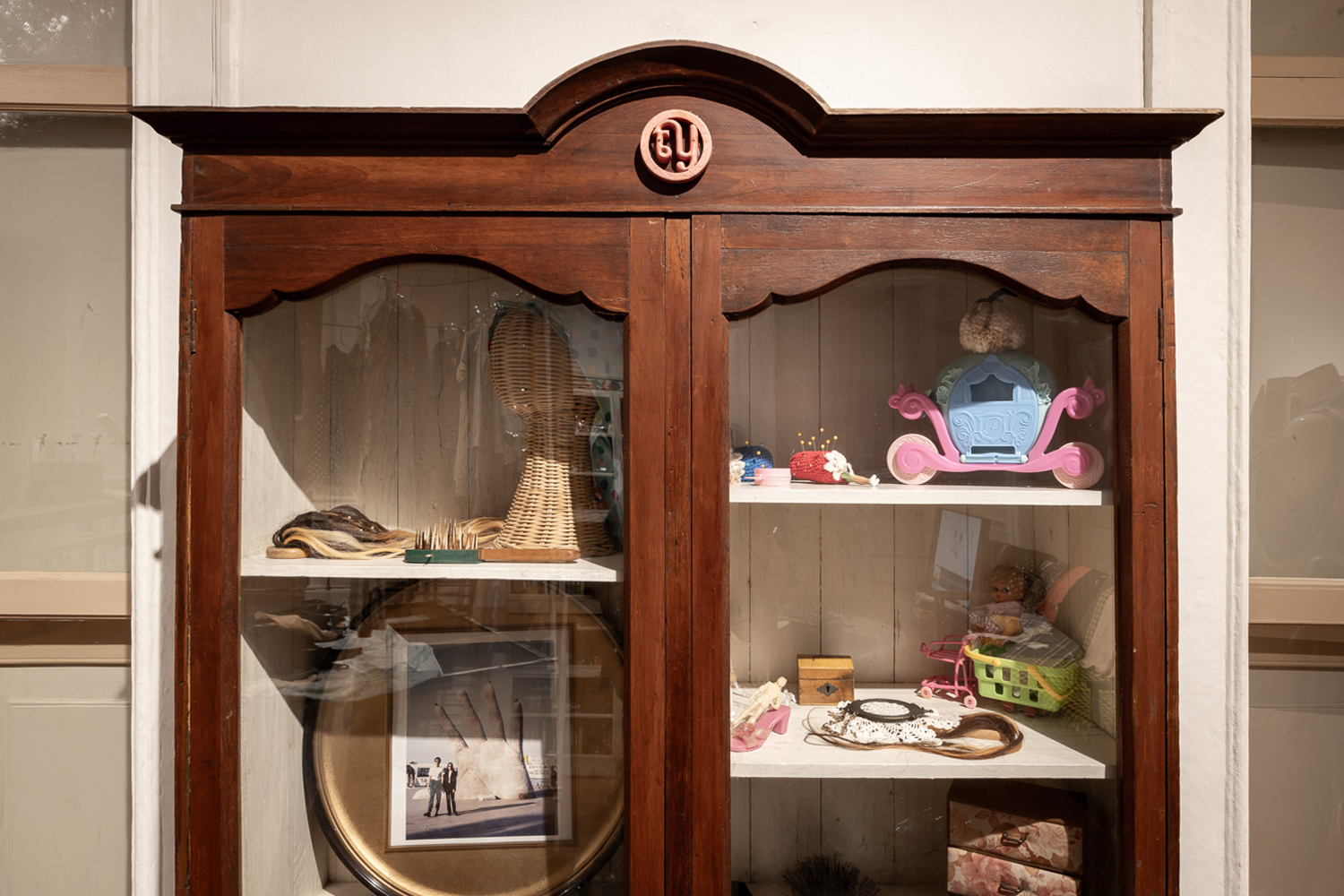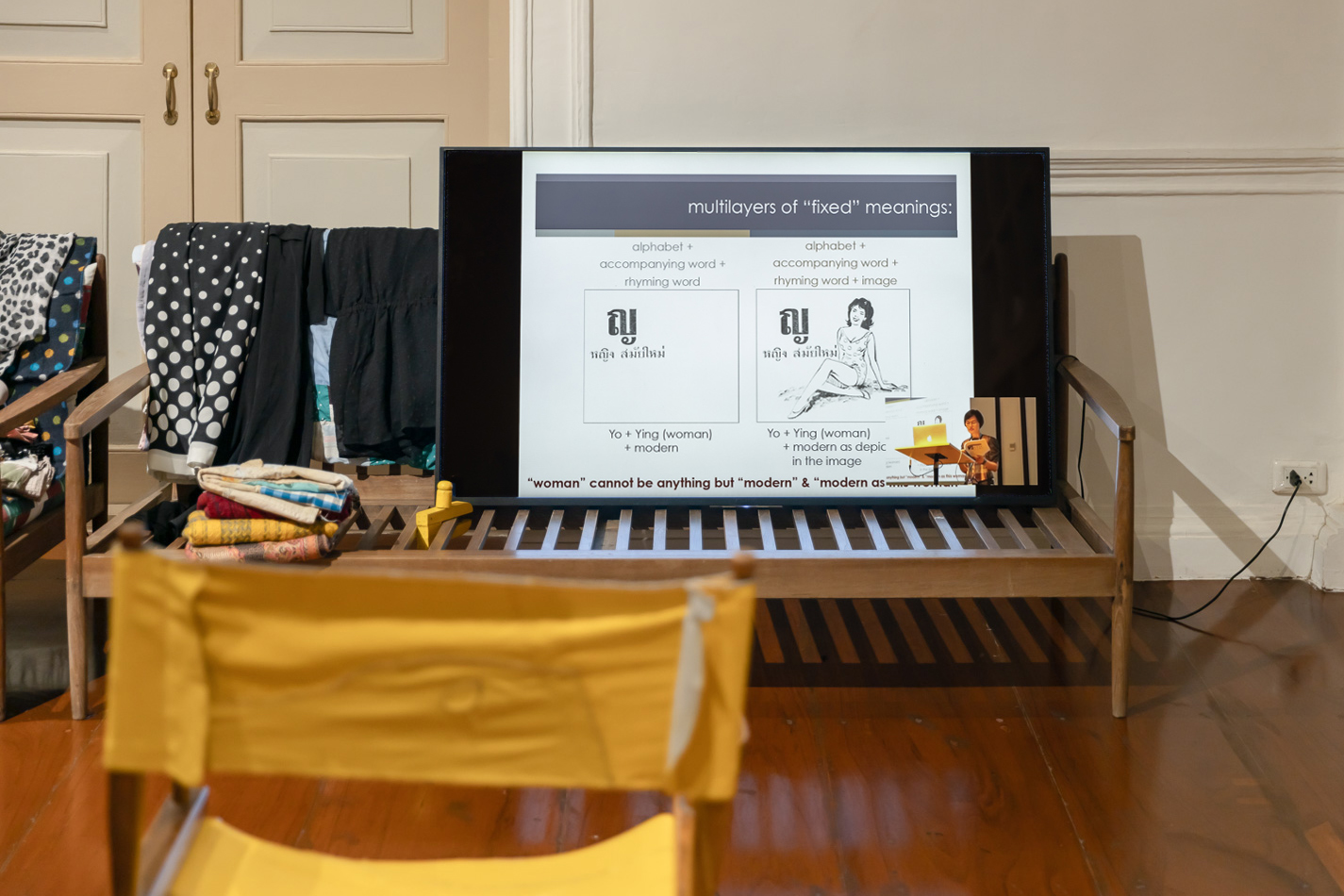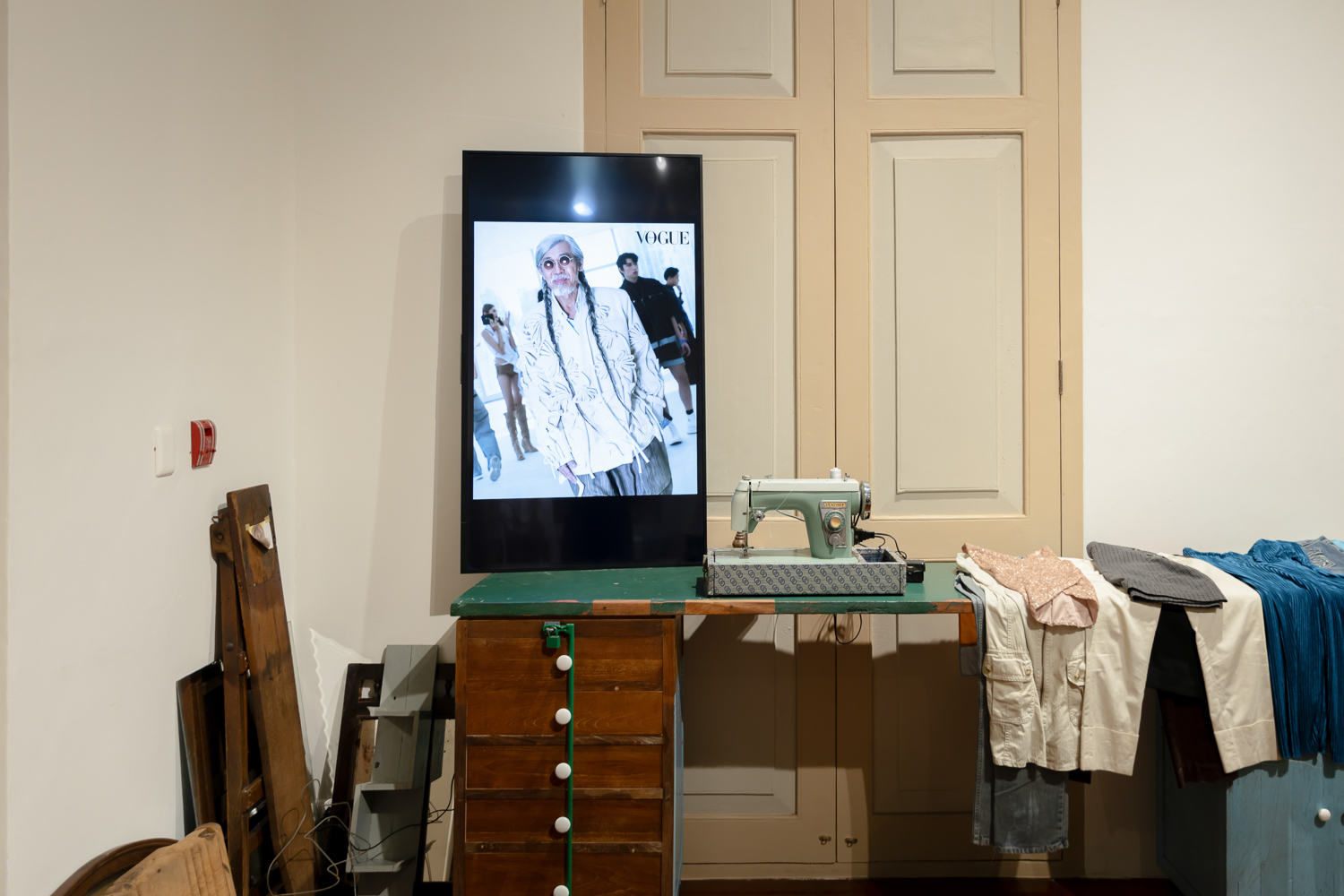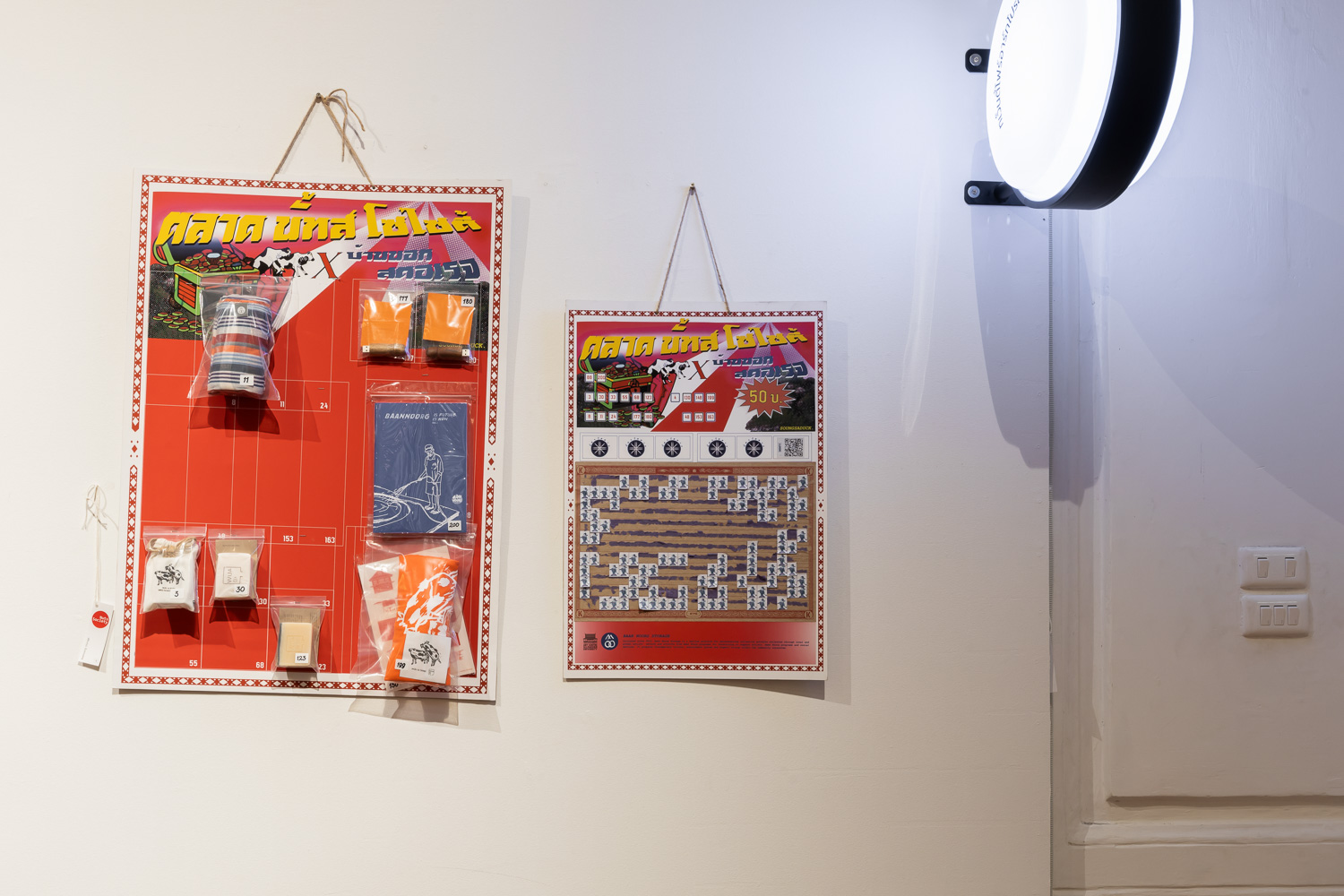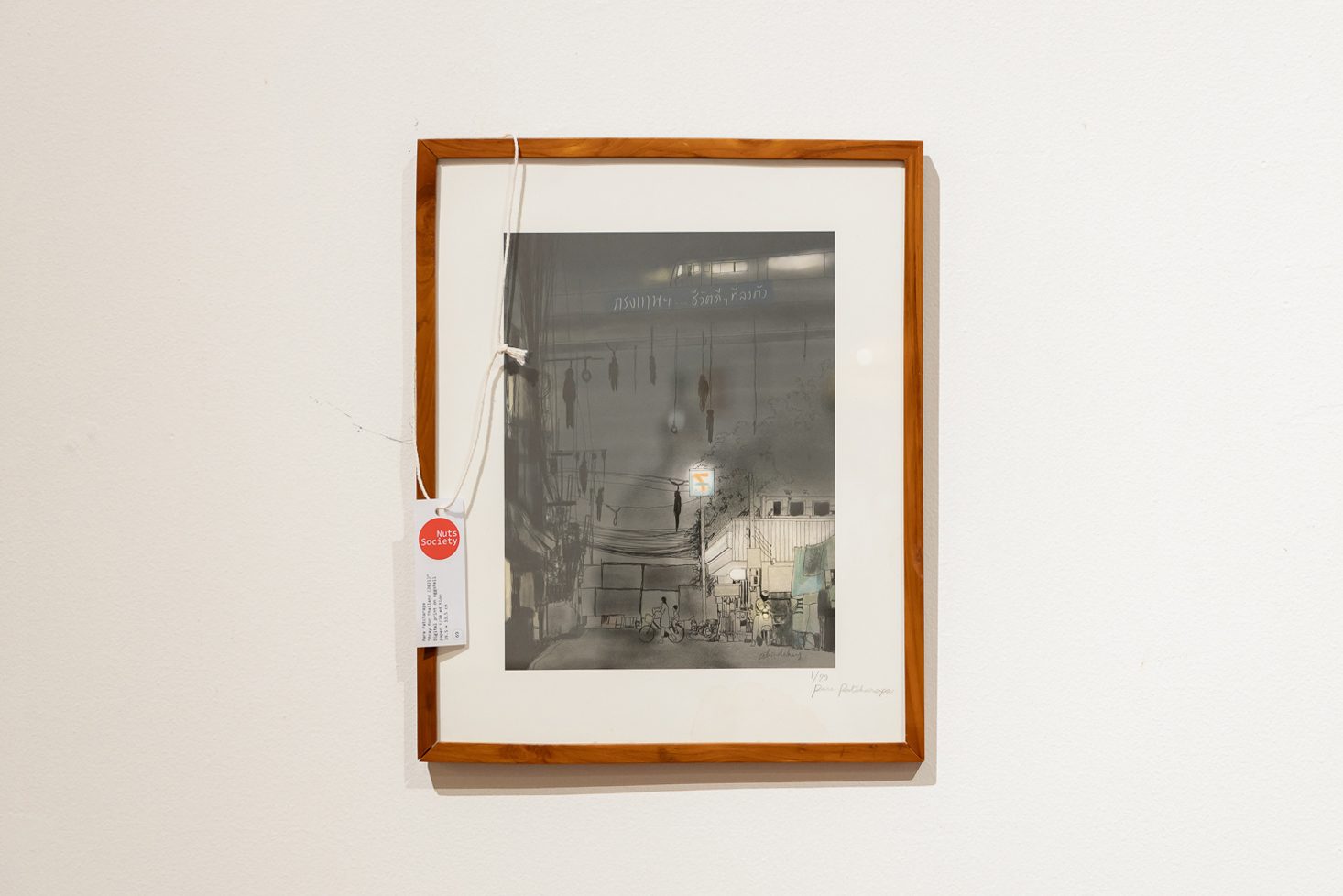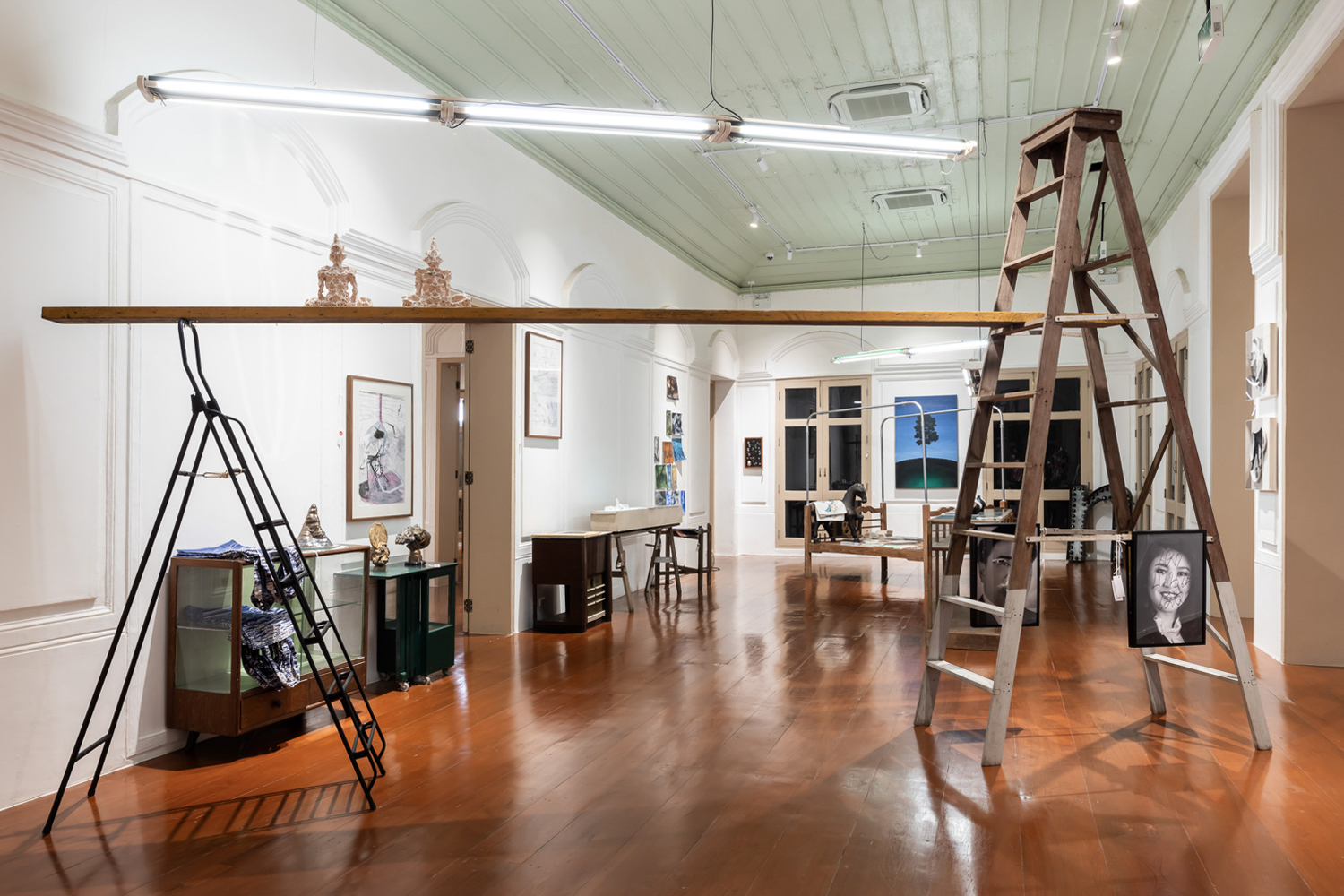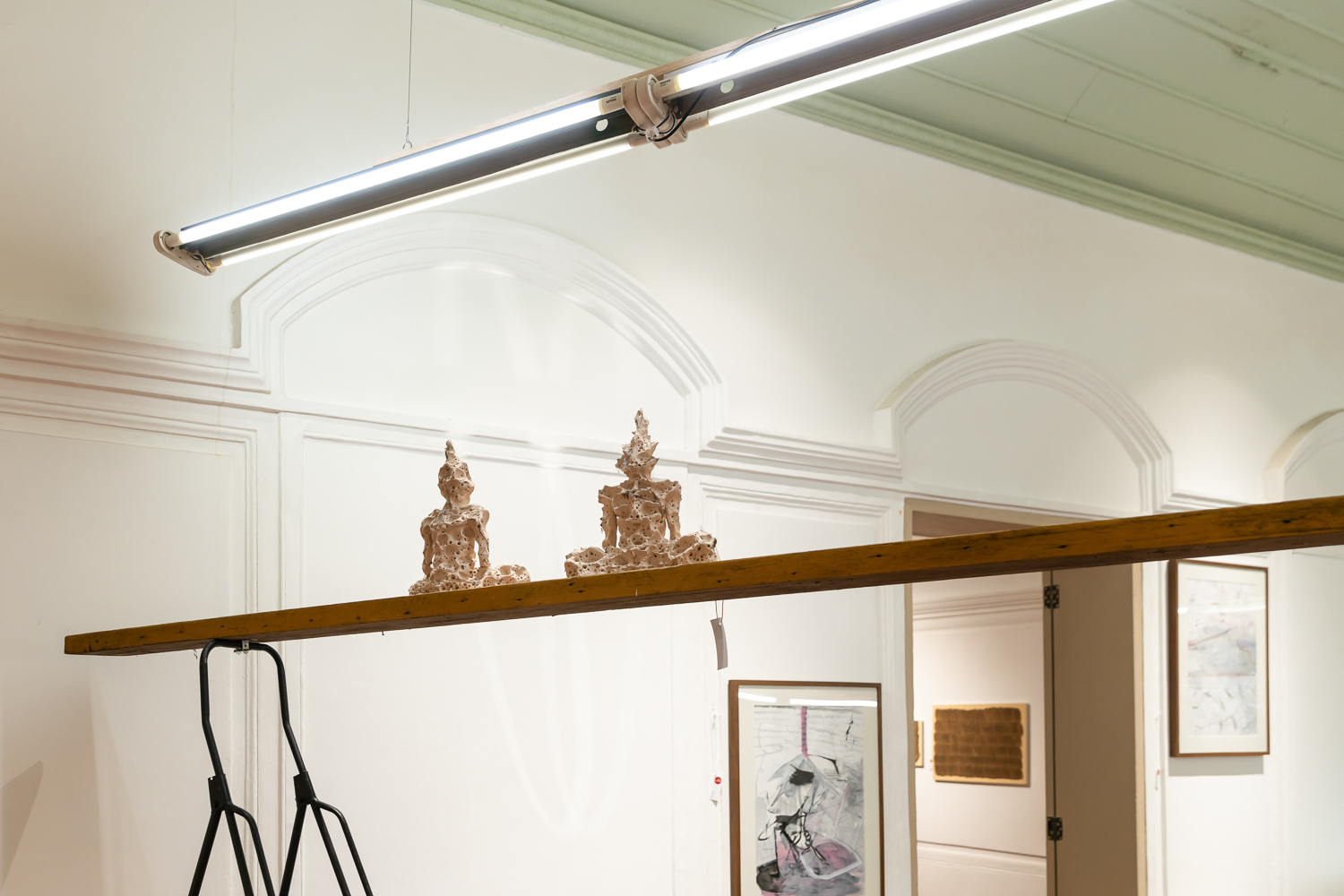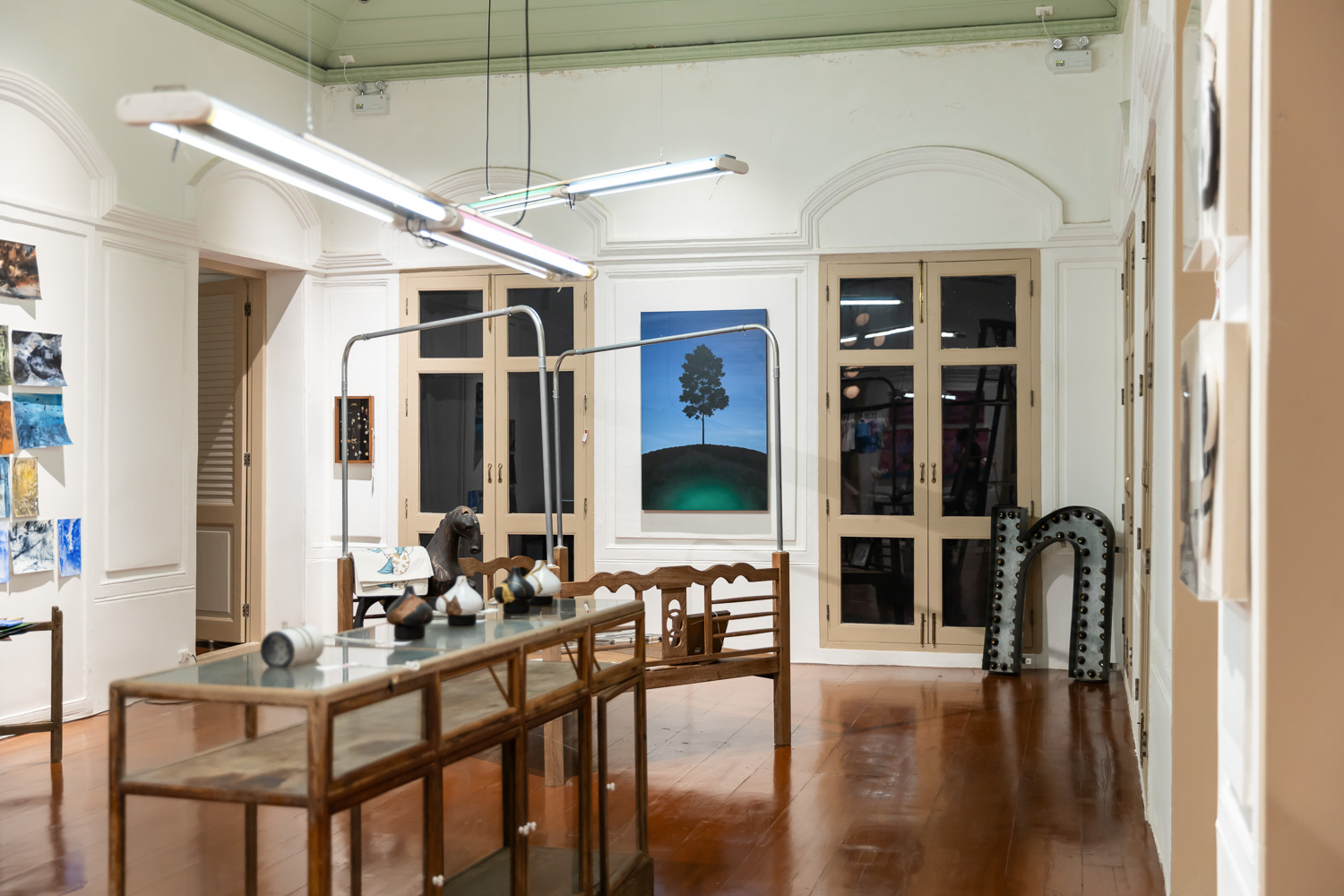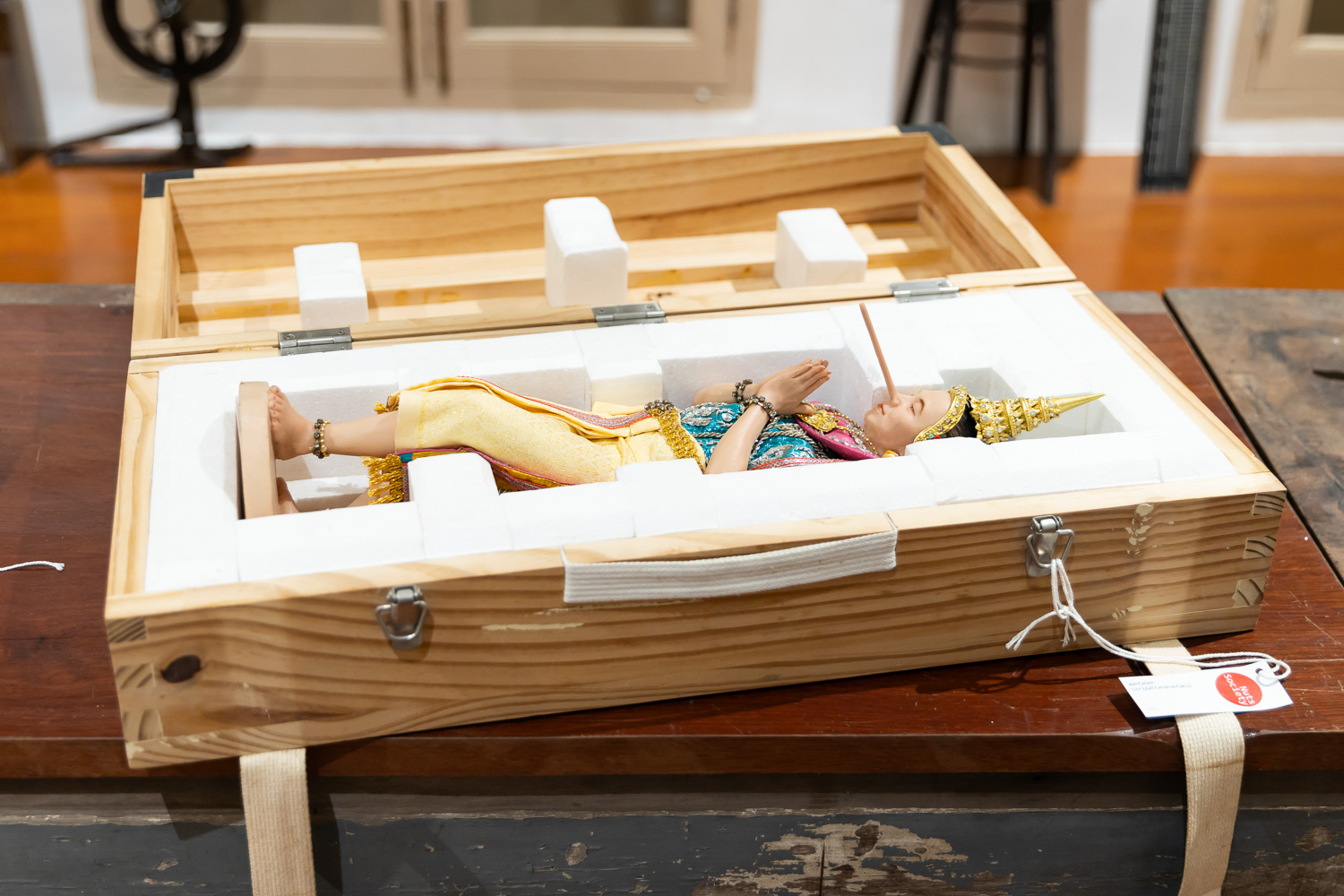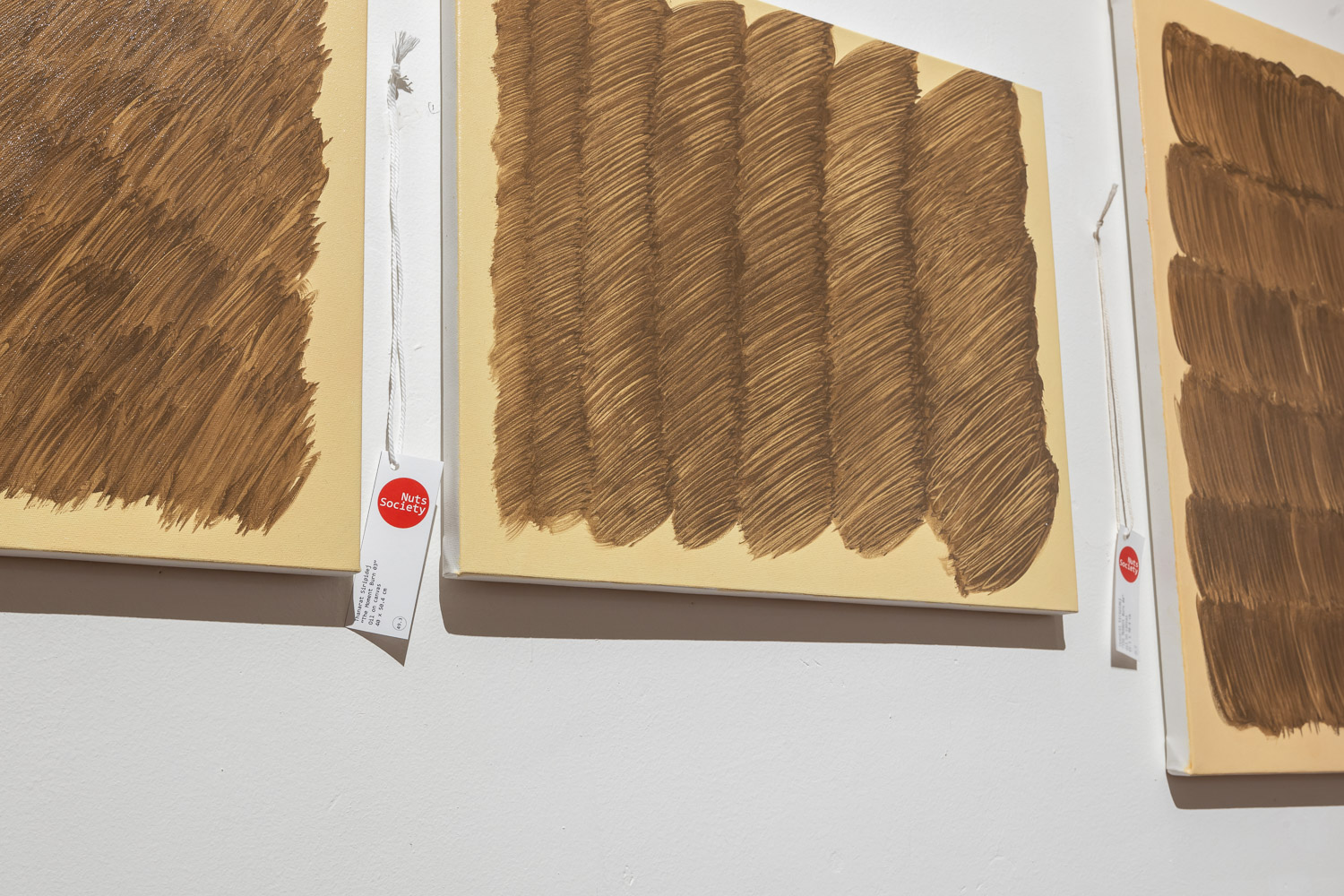AN EXHIBITION DISPLAYS NOPPACHAI UNGKAVATANAPONG’S OBJECTS AND WORKS WHICH REPRESENT HIS MEMORIES TOGETHER WITH A LIFE PARTNER, AND ALSO RAISES INQUIRIES ABOUT GENDER ROLES AND THE FLEA MARKET’S ECONOMIC DYNAMICS
TEXT: CHIWIN LAOKETKIT
PHOTO: KETSIREE WONGWAN
(For Thai, press here)
In 2019, the film ‘Happy Old Year,’ directed by Nawapol Thamrongrattanarit, became a catalyst for introspection and decluttering, resonating deeply with its audience. It encouraged viewers to sift through their personal archives, rearrange and rethink the spaces around them, and confront familial resistance to the idea of a lifestyle overhaul. The film deftly weaves through a labyrinth of emotional attachments to objects, exploring the complex layers of human sentiment tied to relics of past relationships and loved ones whose return bring bittersweet memories of long-lost love and farewells.

This thematic exploration found a real-world counterpart in the later experiences of Noppachai Ungkavatanapong, once merely a spectator of Jean’s fictional journey in ‘Happy Old Year,’ and now a protagonist in his own narrative of recovery and artistic expression. Having emerged from personal grief, Noppachai ventured into the collaborative artistic endeavor with ‘A Million Little Odd Things, the Last Promise, and One Big Picture.’ In the memory of Piyaluk Benjadol, Noppachai’s late life partner, and under the curatorial stewardship of Kritsada Duchsadeevanich, the exhibition became a conduit for expressing the lingering promises and dreams shared between him and Piyaluk. Moreover, it marked the revival of the Nuts Society, an initiative by the duo to cultivate a community space mimicking an art market, where artists could freely exhibit their work and engage with a broader public.

A Million Little Odd Things, the Last Promise, and One Big Picture
“It has been nearly 578 days since I resumed my work in art. This exhibition is a journey derived from a promise made between me and Piyaluk—a promise I never expected to materialize. She had a penchant for collecting old textbooks, beautifully crafted letters, and books with covers featuring illustrations of women. She also had a collection of second-hand household items. She envisioned transforming our home into a museum.”
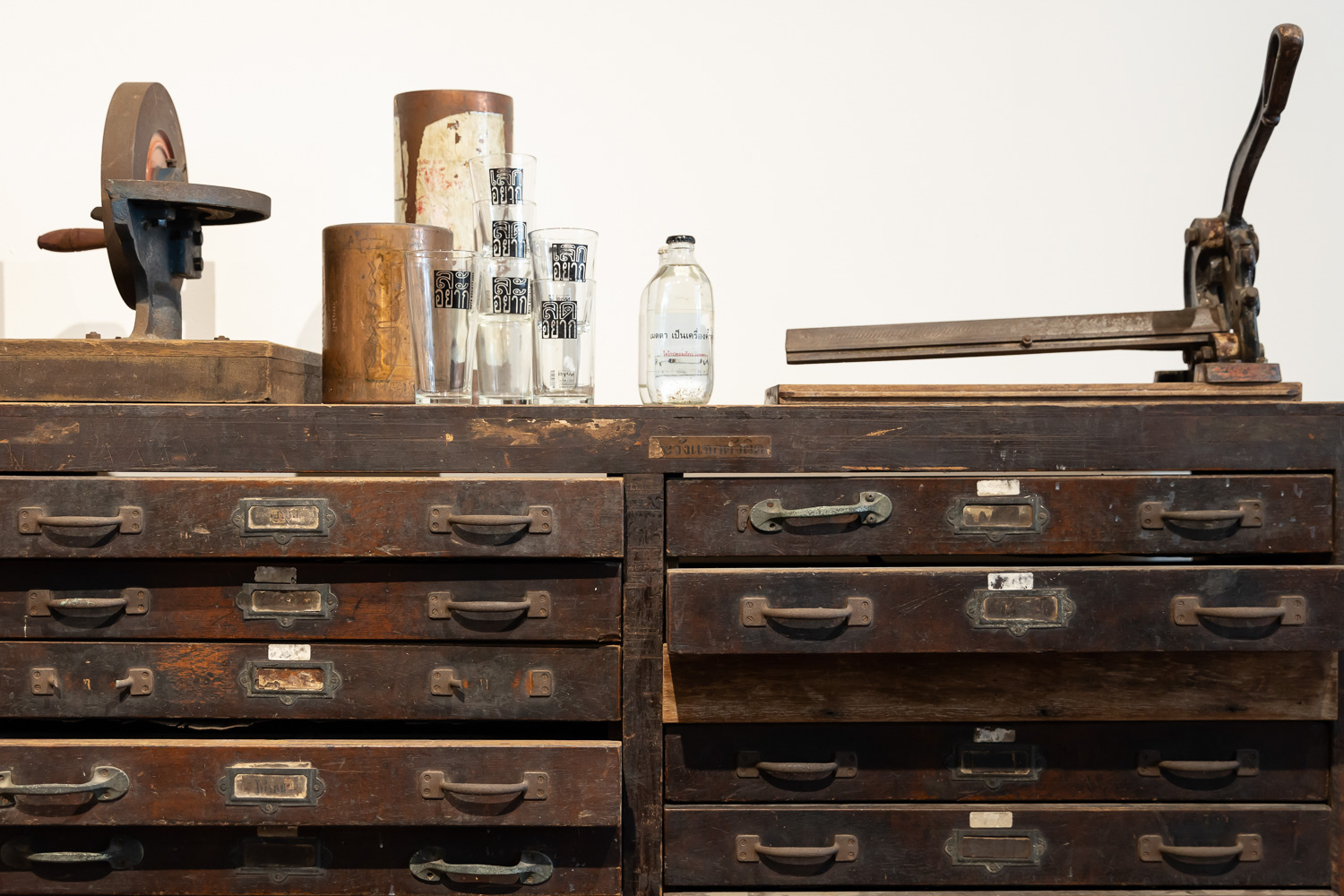
The exhibition transforms the mundane into the monumental. What were once everyday items in Piyaluk’s collection have been elevated to the status of museum artifacts. This includes an array of cabinets—one filled with jewelry and hair strands, another with lead typesets, and a particularly poignant one containing Thai language textbooks that Piyaluk used in her research as a professor at the Faculty of Arts, Bangkok University. An English narration accompanies a video presentation of her academic work on the Thai consonant ‘ญ’ (yor ying), which explores the signs and dynamics of society as reflected through this letter, portraying the essence of femininity as directed by the very alphabet. (In the Thai alphabet song, ‘ญ’ (yor ying) is associated with the phrase ‘yor ying so phar,’ which translates to ‘the fair lady,’ thus linking the letter to femininity. The notion is further accentuated by the ‘ญ’ symbol in capitalized printing, which helped popularize these scripts. Femininity is echoed through the space, taking form in Piyaluk’s voice and the repeated presence of these objects.
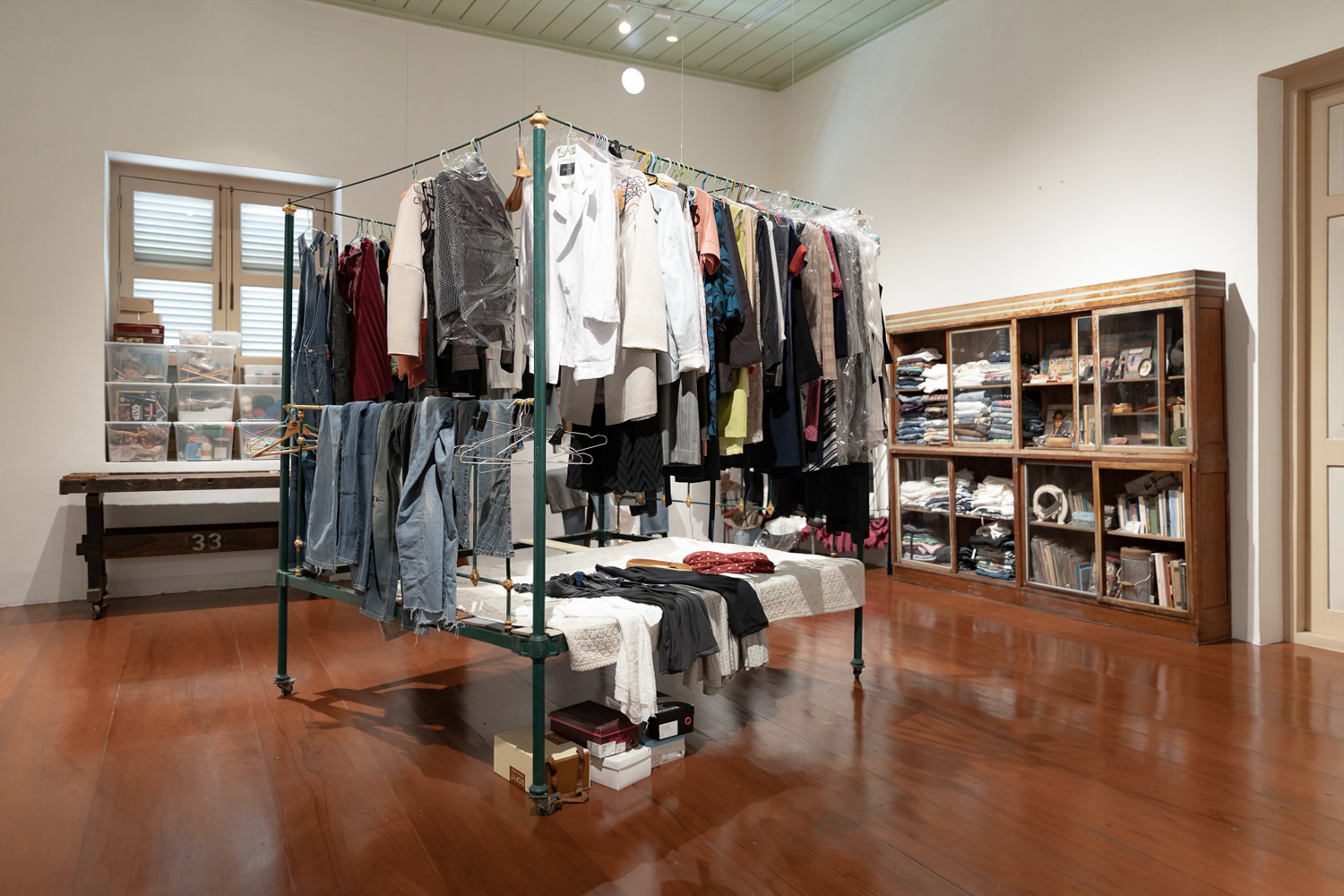
Upon entering another room, an iron bed, repurposed into a makeshift rack, doubles as a repository for clothes. Here, Nopphachai restores Piyaluk’s clothes, rendering them not only wearable but also fit for a video display. The ensuing video installation features Nopphachai parading down a runway, donned in these very outfits, encapsulating both an embrace and existence of life through the attires. This exhibition compels the viewer to contemplate the role of clothes as a fundamental cultural apparatus. What begins as mere fabric, devoid of gender, evolves under the weight of societal expectations into symbols of masculinity and femininity. Here, the defiance of prescribed gender norms and the broader societal constructs surrounding gender nonconformity are laid bare, illustrating the fluid journey of identity transition and transformation.
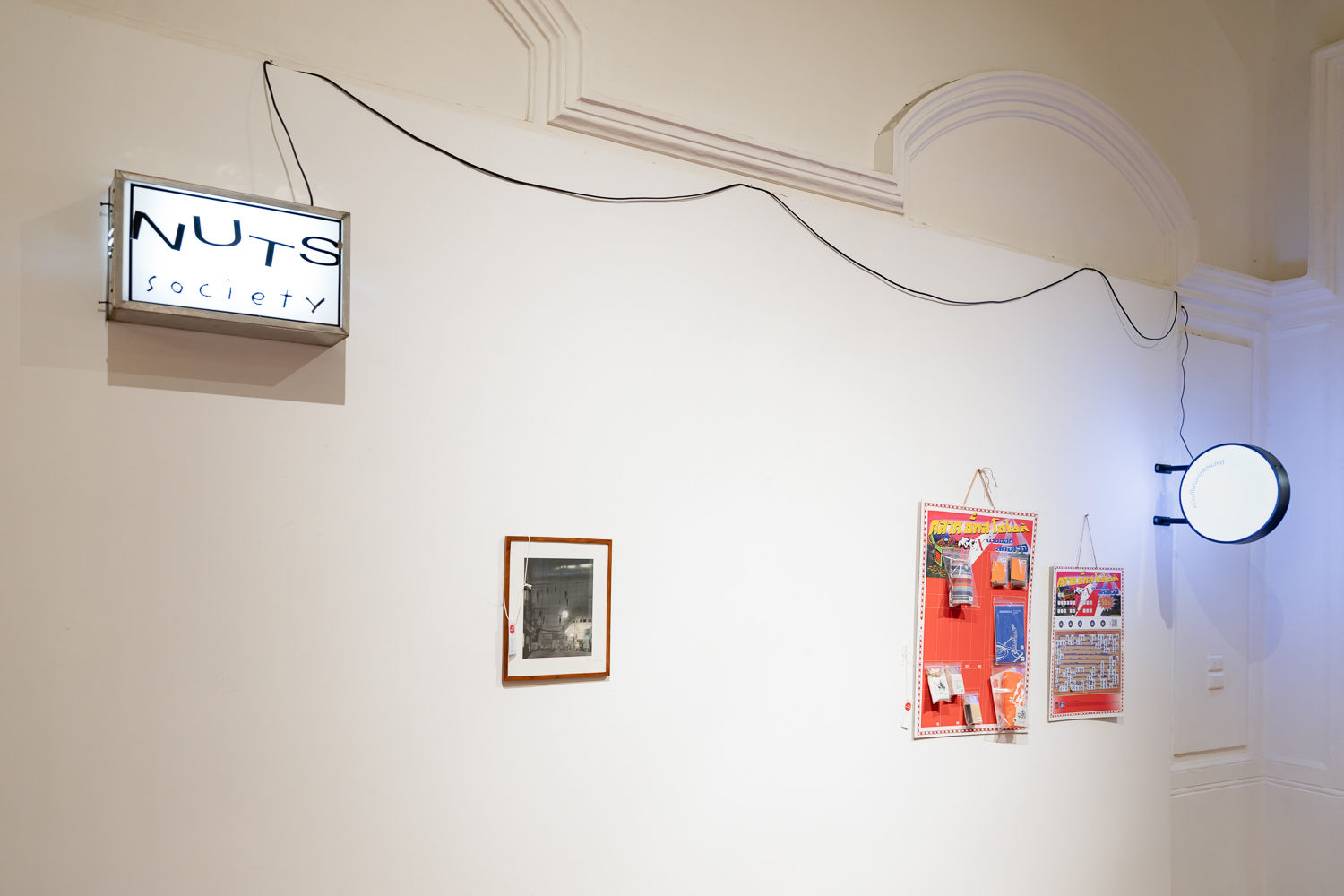
Nuts Society
Nuts Society is Noppachai and Piyaluk’s initiative in public art, originating from an exploration of the significance of text and activities that drive societal engagement. It ranges from setting up hand sanitizing stations around Rattanakosin Island, distributing soda bottles labeled with Buddhist teachings, to organizing aerobic dance sessions. This time around, Nuts Society, in collaboration with various artists from different artistic backgrounds and expertise created the Quality 1st, 2nd hand (Art), and swap market within the exhibition
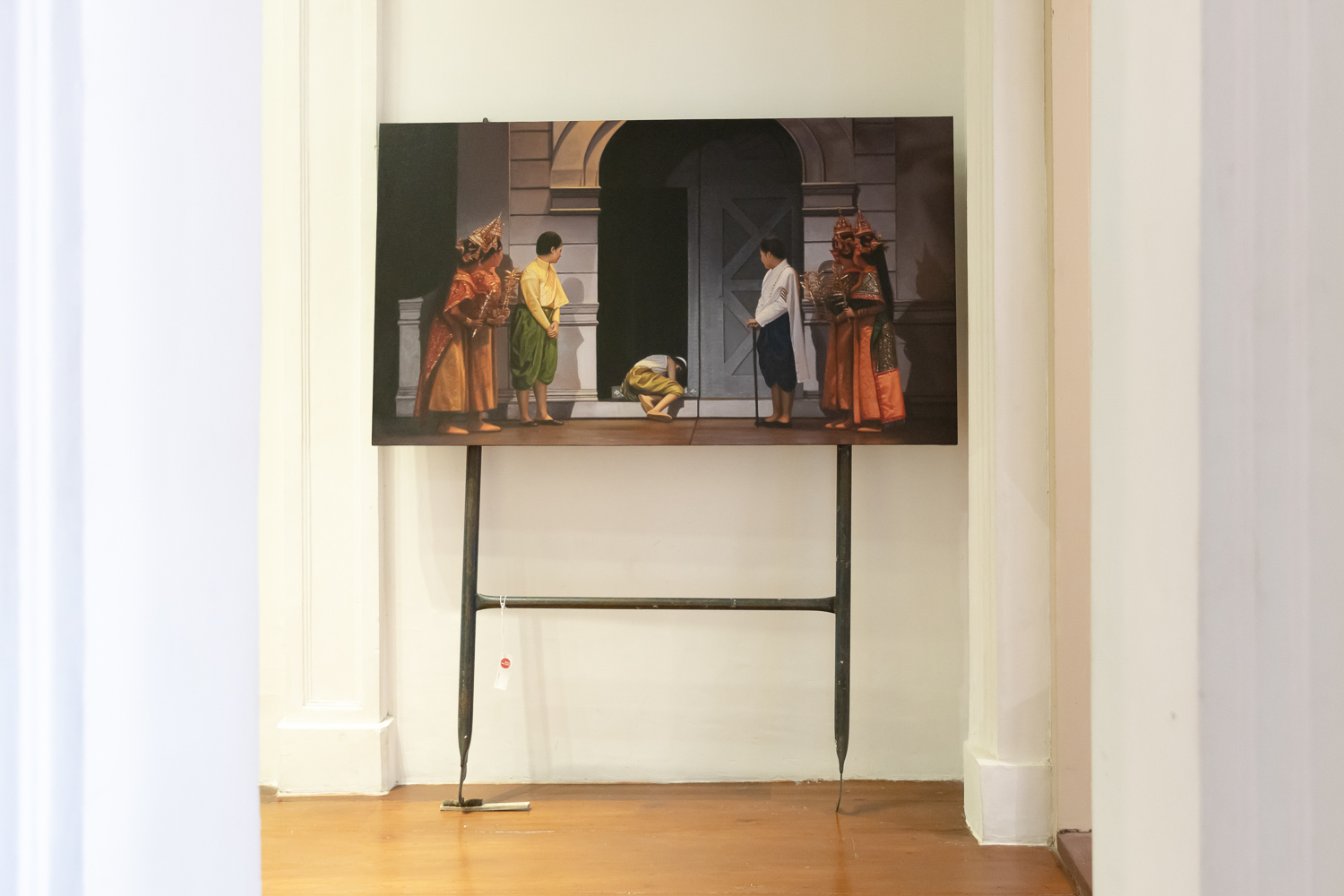
Amidst an economic slowdown, a poignant scene unfolds on the first-floor staircase of the Art Centre, Silpakorn University. Individuals are seen prostrating in total submission in a dimly lit doorway. The exhibition showcases the scaffolding of a theatrical backdrop, adorned with individuals in elaborate, traditional costumes. These elements, immediately purchasable and easy to take home, promptly reflect on the cyclic nature of commodities within capitalism, consumer culture, and the politics of Thai society.

“It’s like putting on clothes—I morph into a structure that can wear them. Nuts Society is about getting the body’s framework ready to bear the weight of every artist’s work, each one like a garment draping the body.”
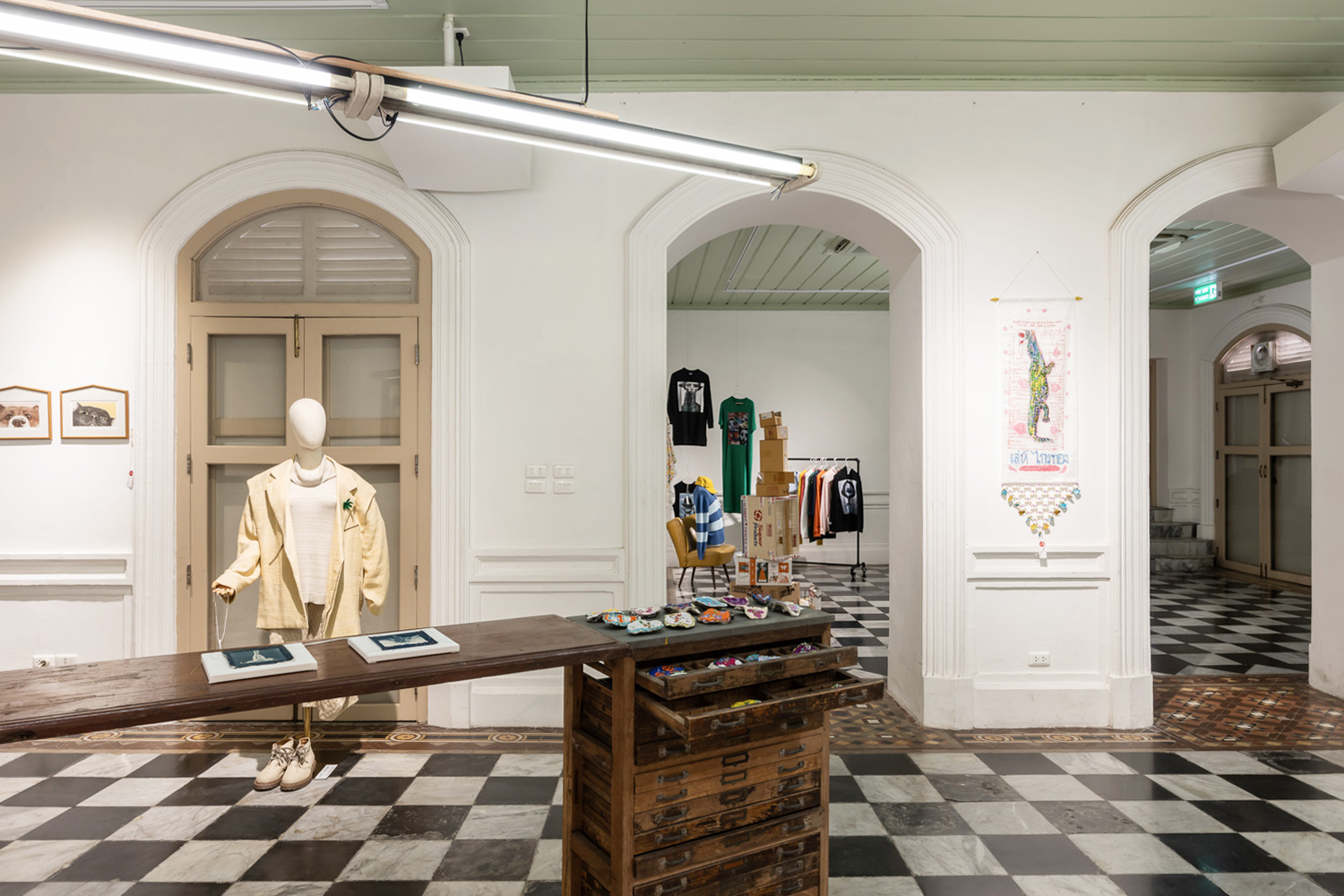
In this installation, cabinets, stairs, wooden beds, and empty spaces become the skeleton, holding together a motley crew of works. Rural lottery tickets, a storage unit repurposed with soap, tote bags, notebooks—objects twisted into new meanings—beckon viewers to participate, to pay up and walk away with the lottery tickets. There’s also a depiction of urban life—especially in a city like Bangkok, where convenience stores are essential for daily existence. Paintings, clothing, mannequins and installations become garments blended with humor and satire, playfully contrasting with the formality of the exhibition space and the unconventional market in a rarely seen fashion.
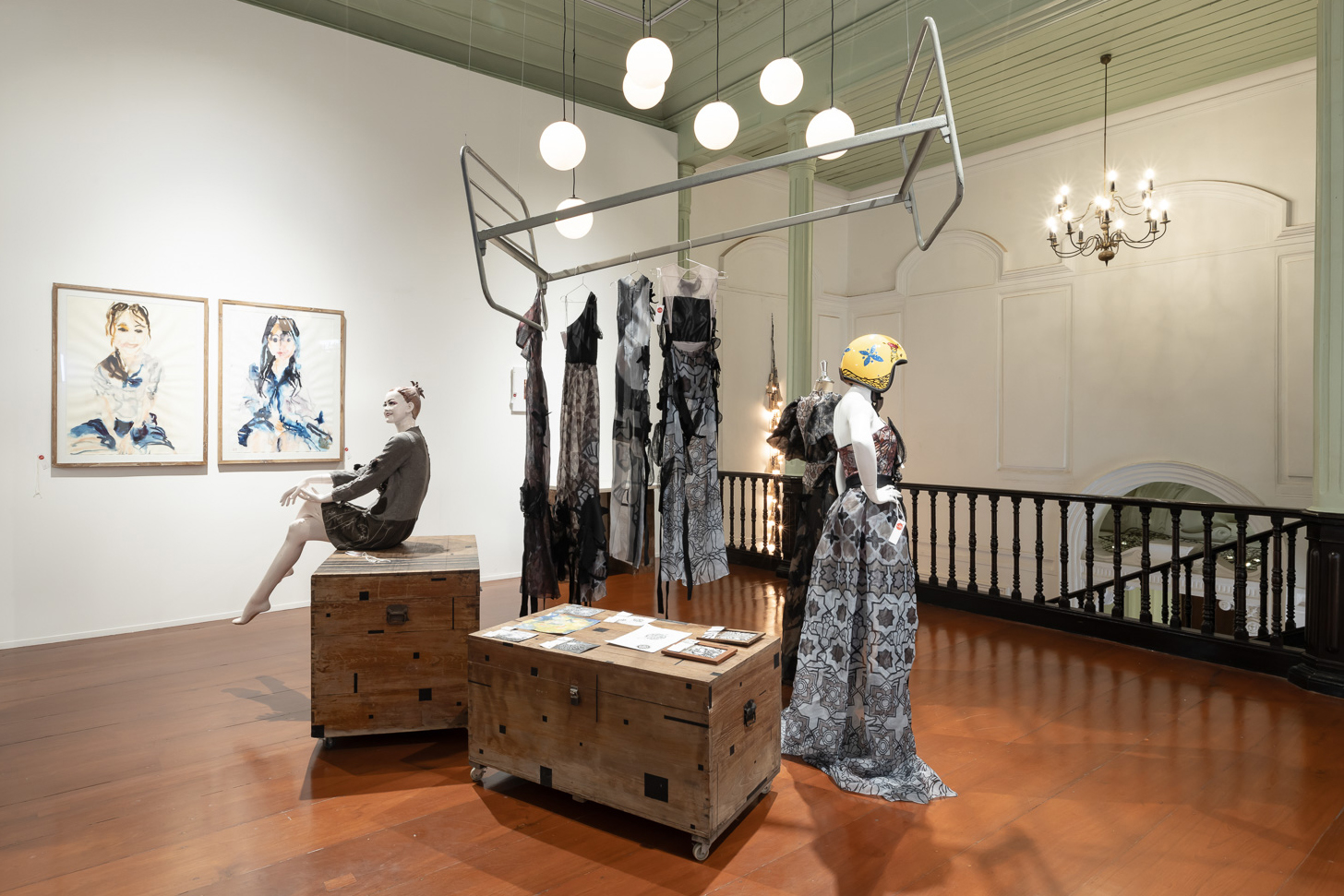
In this exhibition, objects are depicted as vessels steeped in memory and affection. They embody the profound desire to share experiences with loved ones through the medium of art. Some pieces resonate with echoes of the past, transforming into veils that shroud the fluid dynamics of gender. Furthermore, the show boldly challenges the very ecosystem of the flea market economy, which typically fosters casual transactions but here encourages questioning, playful engagement, and the intentional act of purchasing art. It deftly weaves in meanings that relate to tactile experiences, inviting public interaction and deeper perception.
The exhibition, ‘A Million Little Odd Things, the Last Promise, and One Big Picture,’ is on display from June 8 to August 31, 2024, at the Art Centre, Silpakorn University.


